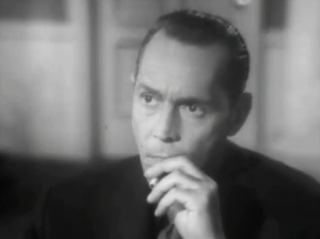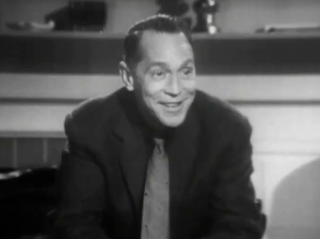Just two weeks after the violent
altercation with Tom Neal, Franchot, still bruised and swollen, married Barbara Payton in her childhood home in Cloquet, Minnesota. Many of Barbara’s family, knowing just as well as the public that this marriage would not last, were absent from the ceremony. It seems that only Franchot and Barbara were hopeful about the union. The usually astute Franchot was so wrapped up in his obsession with Barbara that he failed to recognize that, to the press and his fans, he looked more than foolish. Town officials stated that they did not appreciate the negative publicity associated with Barbara and that Cloquet was unimpressed with her and this marriage.
Following the wedding, Franchot and Barbara were photographed together and then headed to The Flame Supper Club and Hotel Duluth. Two days later, the honeymooners traveled to Franchot’s Canadian lodge before returning to Hollywood.
A week later, on October 5th, Barbara was subpoenaed again to testify in the continuing murder trial of her friend Stanley Adams. That same month, Barbara and Franchot promoted Barbara’s film Drums in the Deep South on a publicity tour of southern cities. Completely opposite from their triumphant publicity tour just nine months before, the couple encountered “boos” from some audience members, disinterest from city officials, and mocking newspaper coverage in several of the tour’s locations. As author John O’Dowd wrote, "As a couple, the Tones had become little more than a tacky, industry joke, and sadly, everyone seemed to know it but them."
So far, Barbara had been in the definite lead for the public's disapproval, with Franchot being looked upon more with pity than anger. But on October 29th, Franchot made headlines all by himself when he spit on a gossip columnist. Dining with Barbara and his mother Gertrude at Ciro's, Franchot approached Florabel Muir. Muir had repeatedly written scathingly about Franchot and Barbara. Franchot, after quite a bit of alcohol, walked up to Florabel and her husband. After some rude remarks were made about Florabel's marriage, Florabel asked Franchot if he was mad at her. Franchot responded, "Yes, I am. So mad, in fact, that I could just spit in your face. In fact, that's just what I'm going to do."
Then, he spit right in her eye! I must admit here and now that Franchot's verbal response always gives me a chuckle. It's such a dignified, cultured way to threaten someone, before very crudely and disgustingly spitting on them. It's hard to believe that Franchot would think that spitting in a lady's eye was a good idea, but this was his year of very bad decisions. I am not placing any blame on Florabel for the specific incident, but I bet she was actually quite pleased it happened because it made excellent fodder for the next day's column. Florabel reported in her next column that Franchot had once been an "upstanding fellow displaying at all times a brilliant mind and charming manners. What has happened to him in the last few months is as big a mystery to me as it is to all his friends and acquaintances."
Florabel called the current Franchot a "guttersnipe" and charged him with being on narcotics and kicking her in the shin. Franchot was so angry at the false narcotics claim that he voluntarily submitted to drug testing and was cleared. In court on December 11, Franchot told the judge, "Your honor, I did not kick the complainant and I did not use any vile language. However, I do admit I may have lost my sense of proportion and my sense of good conduct."
 |
| Franchot arriving at court on December 11, 1951. Source: USC Digital Collection |
Franchot was fined $400, but his 45-day jail sentence for battery was suspended by the judge. Before the Muir incident was even closed in court, Franchot had already begun divorce proceedings against Barbara. As most suspected, it didn't take long for the relationship to hit a sour note. Just 53 days to be exact. In late November, Franchot filed for divorce and not even a full month later, Barbara and Tom Neal were making headlines as they traveled together on a promotional tour for Bride of the Gorilla.
But the marriage proved to be exactly like the courtship. Barbara would break up with Tom and head back to Franchot and then back to Tom again. Franchot was embarrassed and hurt each time Barbara went back to Tom, but seemed to forgive her easily and welcome her back. On their tour, Barbara and Tom were typically drunk, rude, and caught in scandalous situations. Having dropped his divorce complaint in early December, Franchot reinstated it before the end of the year. In January 1952, Franchot and Barbara moved in together again and would remain together until March 15, when Franchot finally had enough and ended it.
The Franchot that Barbara encountered in the spring months of 1952 was not the beaten, pitiful man anymore. After two years, he was done with Barbara and ready for spiteful revenge. Unbeknownst to Barbara, Franchot had never actually dropped his earlier divorce action. Since Barbara wasn't aware it still existed, she failed to contest it in time. Barbara's attorney Milton Golden would claim that this was Franchot's duplicitous plan all along and that Franchot had tricked Barbara into moving back in with him as part of this ruse. Golden and his client Payton were surprised that, for once in the relationship, Franchot had the upper hand.
Franchot had finally shaken off the romantic spell he'd been under and fired back at Barbara even harder with his next move. Knowing that Tom Neal had moved back into the house with Barbara immediately after he vacated it, Franchot hired a private investigator. Photographs were taken of a compromising situation (there were also reports that there were other photos taken of Barbara with men who were not Tom.) Franchot would use these photos as evidence for his divorce, but he'd also use them as personal retaliation by anonymously distributing the photos in sealed, blank envelopes across Hollywood. This malicious act was not typical of Franchot at all and researcher Lisa Burks would tell author John O'Dowd that Franchot had been pushed to "his limits with her never-ending betrayals" and that this out-of-character revenge was motivated by "extreme emotional pain." Barbara's sister-in-law Jan agreed that "it was a very cruel thing to do...and not at all like Franchot."
Presented in court, the photos nullified Barbara's cross-complaint and on May 17, 1952, Franchot was granted a divorce.
Barbara would remain with Tom Neal for quite some time, but they never married. Due to the studio and public's response to their unpredictable and salacious behavior, Barbara and Tom's careers were soon destroyed. In 1953, the couple starred together in the film The Great Jesse James Raid and the play The Postman Always Rings Twice, but both attempts failed critically and commercially. They parted later that year.
Tom would later work as a landscaper. He married Patricia Fenton in 1956 and following their divorce, Tom married Gale Bennett in 1960. On April 2, 1965, Bennett was found dead of a gunshot wound to the head. Suspicion quickly turned to Tom, who surrendered himself the next day. Tom admitted that he and Gale were separated and arguing when he visited her on April 1. He claimed that Gale was killed when the gun accidentally fired during a physical struggle between the two. Found guilty of involuntary manslaughter, Tom served six years in prison. He died of heart failure at age 58 on August 7, 1972, just eight months after being released on parole.
 |
| Barbara covered in bruises at the police station, 1962. Source: UCLA Digital Collections |
 |
| The I Am Not Ashamed cover |
By the late 1950's, it was hard for the public to remember Barbara as the glamorous, young actress of Kiss Tomorrow Goodbye. She was, by this time, an alcoholic and drug addict with multiple arrests. One of those arrests was for prostitution, the career she turned to once her promising acting career ended. In the early 1960's, Barbara participated in the exploitative biography project I Am Not Ashamed in order to buy more alcohol. Sadly, the one-time beauty that wealthy big names fought over was now an overweight and drunk "lady of the night" who was regularly beaten by her clients. It's devastating, truly, that someone could fall so far in such a short time. It seems Barbara was intent on self-destruction. Friends who knew her tried to intervene multiple times, but Barbara was, just like the title, not ashamed. She rejected all chances for a better life and died at only 39 years old on May 8, 1967. I highly recommend John O'Dowd's biography Kiss Tomorrow Goodbye: The Barbara Payton Story. It's a well-researched work on an interesting life. I learned a great deal from the book and couldn't have written these posts without it.
Following the circus that was 1950-1952, Franchot would quickly pick up the pieces of his own life and return his focus to his career, his sons, dates with glamorous, but more stable women, and a private life lived in New York and at his lodge in Canada. Like Barbara, Franchot would drink more heavily with each passing year, but didn't let it interfere with his work ethic or public behavior (however, it did cause the end of his final marriage to actress Dolores Dorn.) He would never again let himself be smeared and ridiculed in the press. Franchot would outlive Barbara by just one year, dying from lung cancer at the age of 63 in 1968.
In the early 60's, Franchot was stopped by a reporter and asked for his response to Barbara's prostitution charges. Franchot, no longer bitter, said he felt bad that Barbara was having a tough time and that he wished her well.
If you missed the first two parts of my Payton-Tone series, please read about the
beginning of the relationship and the
altercation, too. Researching Franchot and Barbara's relationship and Barbara's life afterwards has been a little emotionally draining for me. It was just such a rough time for Franchot and a rough life for Barbara. Even though Barbara was responsible for a lot of Franchot's heartache and completely responsible for the sad path of her own life, I still feel badly that her life was so tragic. I'm looking forward to celebrating happier times in Franchot's life this month, including Franchot's Oscar-nominated performances.
Sources:



























